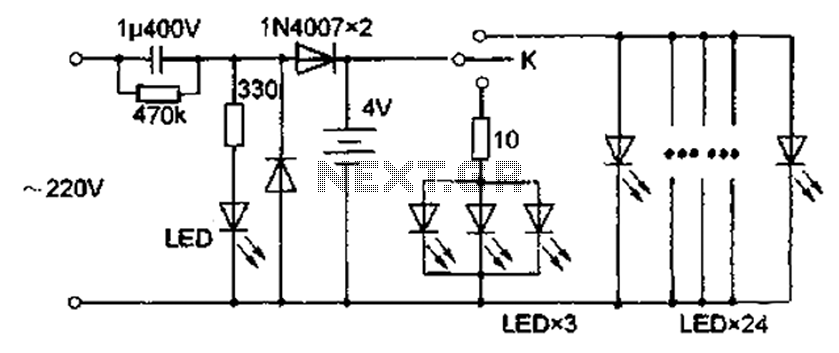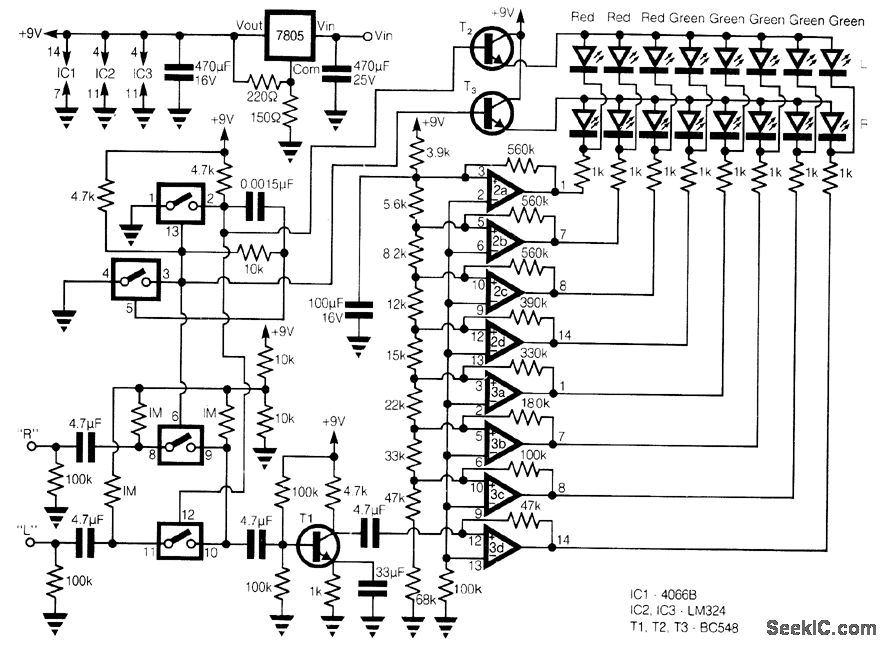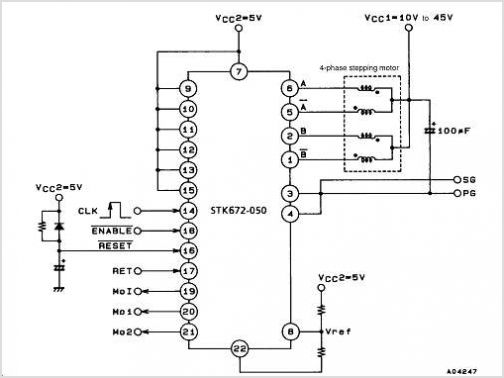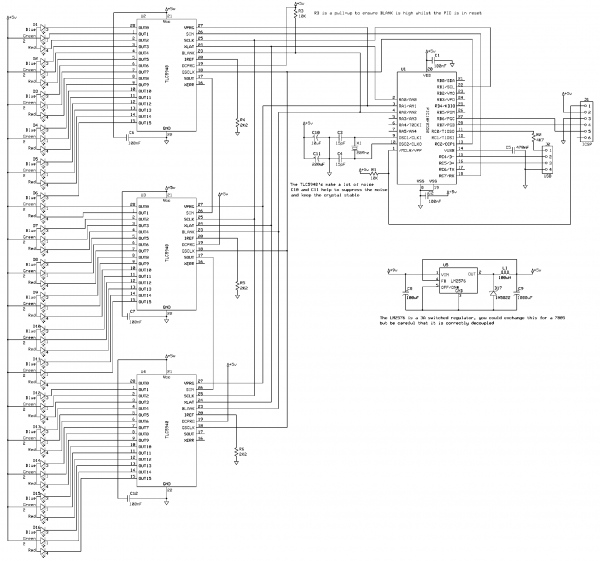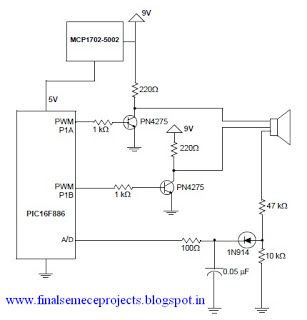
DC/DC LED Driver in ThinSOT
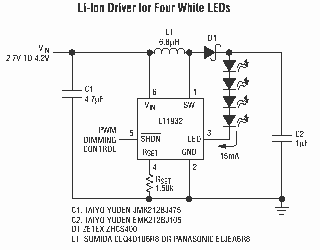
The LT1932 is a fixed frequency step-up DC/DC converter designed to operate as a constant-current source. Because it directly regulates output current, the LT1932 is ideal for driving light emitting diodes (LEDs) whose light intensity is proportional to the current passing through them, not the voltage across their terminals.
With an input voltage range of 1V to 10V, the device works from a variety of input sources. The LT1932 accurately regulates LED current even when the input voltage is higher than the LED voltage, greatly simplifying battery-powered designs. A single external resistor sets LED current between 5mA and 40mA, which can then be easily adjusted using either a DC voltage or a pulse width modulated (PWM) signal. When the LT1932 is placed in shutdown, the LEDs are disconnected from the output, ensuring a quiescent current of under 1µA for the entire circuit.
The LT1932's architecture incorporates a fixed frequency switching regulator, which enhances efficiency and minimizes electromagnetic interference. The device employs an internal power switch and a synchronous rectifier, allowing for improved conversion efficiency, especially at lower input voltages. This feature is particularly beneficial in portable applications where battery life is critical.
The output current can be finely tuned through the selection of an external resistor, providing flexibility in LED brightness control. The use of PWM signals for dimming allows for smooth transitions in light intensity, making the LT1932 suitable for applications requiring precise lighting control, such as in displays or decorative lighting systems.
Additionally, the LT1932 includes built-in protection features such as thermal shutdown and overcurrent protection, ensuring reliable operation under varying conditions. The compact package size and minimal external component requirements facilitate easy integration into space-constrained designs.
In summary, the LT1932 is a versatile, efficient, and reliable solution for driving LEDs in a wide range of applications, particularly where battery efficiency and precise current regulation are paramount.The LT®1932 is a fixed frequency step-up DC/DC converter designed to operate as a constant-current source. Because it directly regulates output current, the LT1932 is ideal for driving light emitting diodes (LEDs) whose light intensity is proportional to the current passing through them, not the voltage across their terminals.
With an input voltage range of 1V to 10V, the device works from a variety of input sources. The LT1932 accurately regulates LED current even when the input voltage is higher than the LED voltage, greatly simplifying battery-powered designs. A single external resistor sets LED current between 5mA and 40mA, which can then be easily adjusted using either a DC voltage or a pulse width modulated (PWM) signal.
When the LT1932 is placed in shutdown, the LEDs are disconnected from the output, ensuring a quiescent current of under 1µA for the entire circuit. 🔗 External reference
With an input voltage range of 1V to 10V, the device works from a variety of input sources. The LT1932 accurately regulates LED current even when the input voltage is higher than the LED voltage, greatly simplifying battery-powered designs. A single external resistor sets LED current between 5mA and 40mA, which can then be easily adjusted using either a DC voltage or a pulse width modulated (PWM) signal. When the LT1932 is placed in shutdown, the LEDs are disconnected from the output, ensuring a quiescent current of under 1µA for the entire circuit.
The LT1932's architecture incorporates a fixed frequency switching regulator, which enhances efficiency and minimizes electromagnetic interference. The device employs an internal power switch and a synchronous rectifier, allowing for improved conversion efficiency, especially at lower input voltages. This feature is particularly beneficial in portable applications where battery life is critical.
The output current can be finely tuned through the selection of an external resistor, providing flexibility in LED brightness control. The use of PWM signals for dimming allows for smooth transitions in light intensity, making the LT1932 suitable for applications requiring precise lighting control, such as in displays or decorative lighting systems.
Additionally, the LT1932 includes built-in protection features such as thermal shutdown and overcurrent protection, ensuring reliable operation under varying conditions. The compact package size and minimal external component requirements facilitate easy integration into space-constrained designs.
In summary, the LT1932 is a versatile, efficient, and reliable solution for driving LEDs in a wide range of applications, particularly where battery efficiency and precise current regulation are paramount.The LT®1932 is a fixed frequency step-up DC/DC converter designed to operate as a constant-current source. Because it directly regulates output current, the LT1932 is ideal for driving light emitting diodes (LEDs) whose light intensity is proportional to the current passing through them, not the voltage across their terminals.
With an input voltage range of 1V to 10V, the device works from a variety of input sources. The LT1932 accurately regulates LED current even when the input voltage is higher than the LED voltage, greatly simplifying battery-powered designs. A single external resistor sets LED current between 5mA and 40mA, which can then be easily adjusted using either a DC voltage or a pulse width modulated (PWM) signal.
When the LT1932 is placed in shutdown, the LEDs are disconnected from the output, ensuring a quiescent current of under 1µA for the entire circuit. 🔗 External reference
